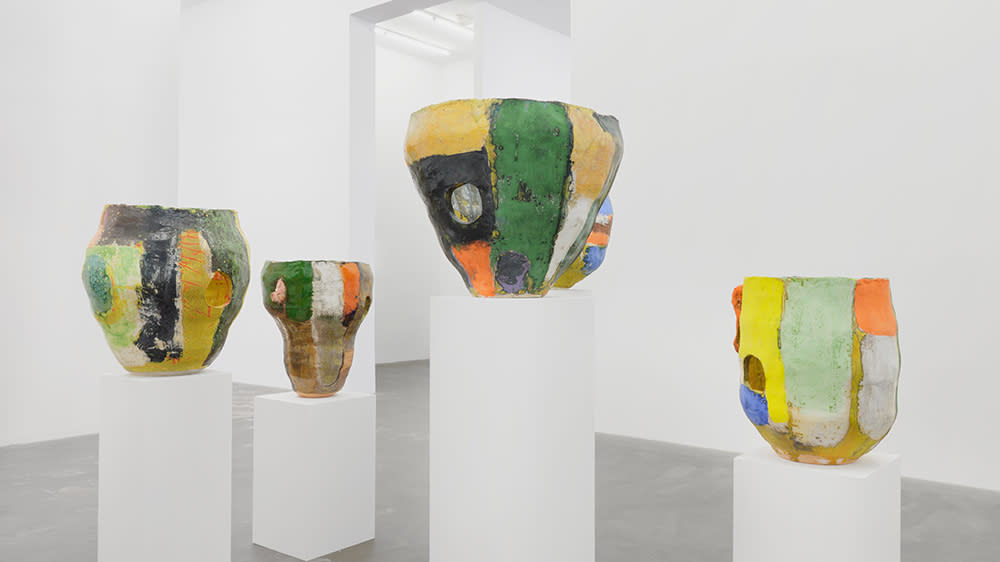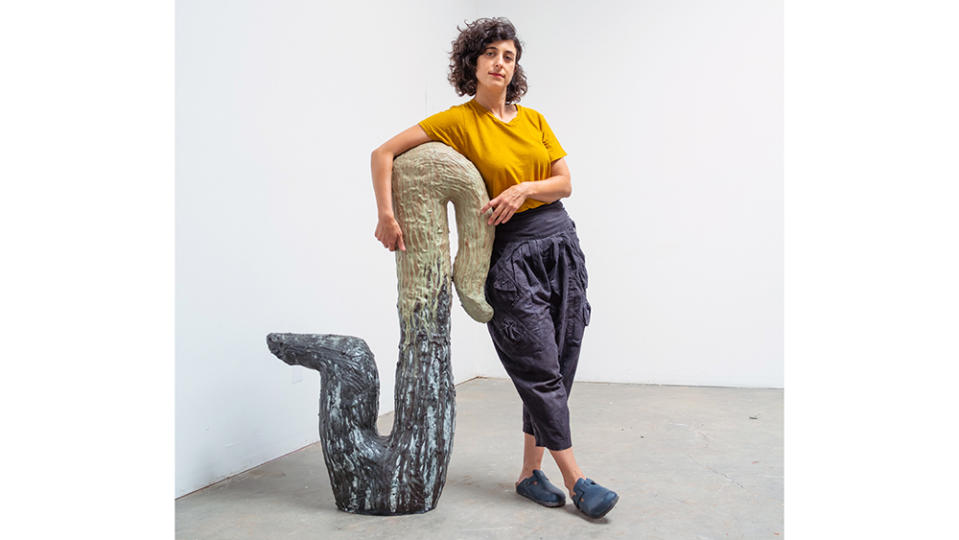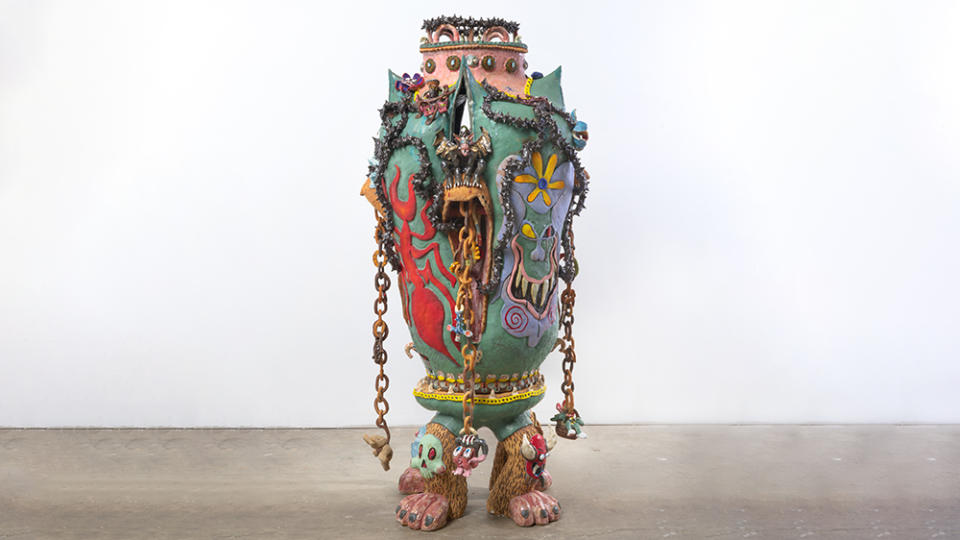Why California Has Become a Hotbed for Ceramic Art

Back in 1988, when artist Tony Marsh took a full-time teaching post at California State University, Long Beach, he was determined to broaden the appeal of ceramics, his chosen medium. He spread the word that if an artist was curious about working with clay, he’d be happy to teach them how. Soon, painters and sculptors were accepting his offer of free studio space and use of the school’s coveted kilns. In the summers, Marsh would host up to 50 artists, all sharing tips—or, as one puts it, “stealing from each other”—in the spirit of discovery.
Many of them, including Roger Herman, Ruby Neri, Jennifer Rochlin and Sylvie Auvray, to name just a few, have become some of the most exciting ceramists working today and have helped cement SoCal as an epicenter of the increasingly in-demand medium. Sharif Farrag, a rising talent, was on a residency at Long Beach while they experimented there and recalls, “My neck was bent back all day looking at giants.”
More from Robb Report
Though ceramics has a long (if sometimes shaky) association with modern and contemporary art, from Picasso’s prolific practice to New York–based Arlene Shechet’s present-day mastery, the medium is deeply entwined with the Golden State. Several artists interviewed chalk it up to the state’s influential art schools, which have the real estate to house gas kilns capable of firing large-scale works; the dry climate also plays a role. But cultural history may be the dominant factor: More than half a century ago, Viola Frey, Peter Voulkos and Robert Arneson defied convention by working in clay—and encouraged their students to explore the ancient and humble material with the same imagination they would metal or paint. “The whole state has been hard at work since the ’60s redefining what can be made of clay,” Marsh says.

Yoshihiro Makino
For years, Herman adds, as ceramics was considered mere “craft,” the outside world wasn’t paying much attention. “Artists are always freer when there is no real market around,” he says, “and they can create without having Big Brother looking at you.” Herman, the longtime head of painting at UCLA (now retired) had little interest in making ceramics until a student offered to teach him to throw a pot. Now, he calls it a “guilty pleasure.”
The current crop is an adventuresome lot who thrive on not only clay’s physicality but also its inherent element of surprise.
Julia Haft-Candell explores what she calls the “tension between the known and the unknown,” sometimes glazing, firing and reglazing a piece 10 times to get the surface exactly to her liking. “I’m purposely using glazes with a little bit of volatility, that aren’t totally predictable, because I want there to be things that I don’t have control over,” she says.
Farrag similarly compares the kiln to “someone else” having a hand in the outcome. He always has a pot going in his studio, the way many artists maintain a daily drawing practice, but his inventions are wildly imaginative, with whimsical creatures and jumbles of protruding details. “They go through the goofy-meter,” he says.

Robert Wedemeyer
While some ceramists riff on vessels, others are pushing clay’s formal boundaries. Neri, daughter of noted Bay Area sculptor Manuel Neri, has been moving toward pure sculpture. On Zoom she reveals a work in progress: a reclining woman, her breasts and legs pointing skyward. “My work is pretty sexual and sort of Pop and very blond,” she says. A painter with a background in graffiti, Neri is thought to be the first artist to use an airbrush and a paint gun to “draw” with glaze. Her pieces often glow bright in pinks and yellows. “I think yellow is this hysterical color, almost like pure feminism.”
Their highly individual practices aside, California’s ceramists also stand out for their strong sense of community. Those with their own kilns share, and Haft-Candell has started a school in her studio. “Right now, I’m firing Roger’s pieces even though he doesn’t know I am,” says Farrag. “There’s something familial about it all that’s really heartfelt and nice.”
Best of Robb Report
Sign up for Robb Report's Newsletter. For the latest news, follow us on Facebook, Twitter, and Instagram.